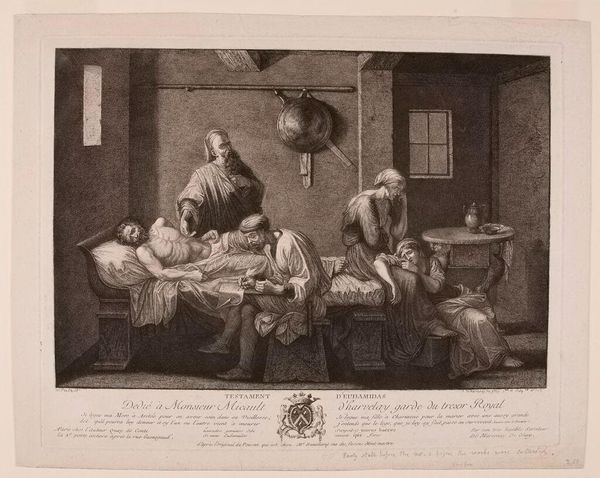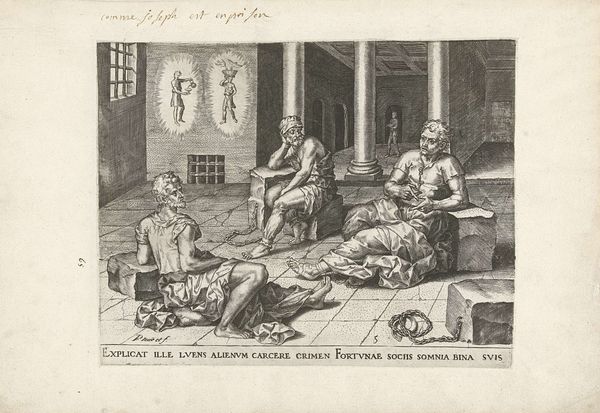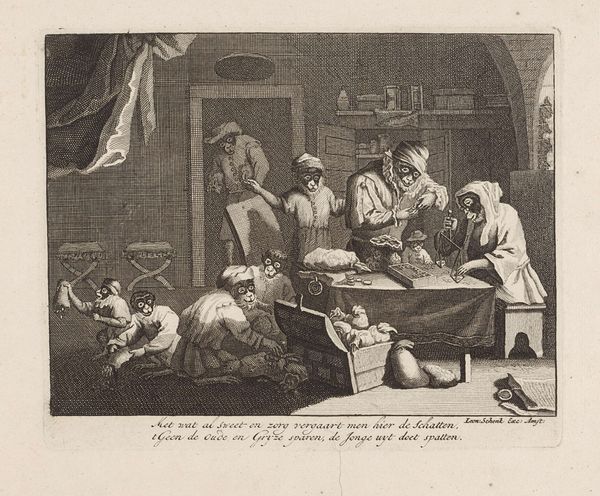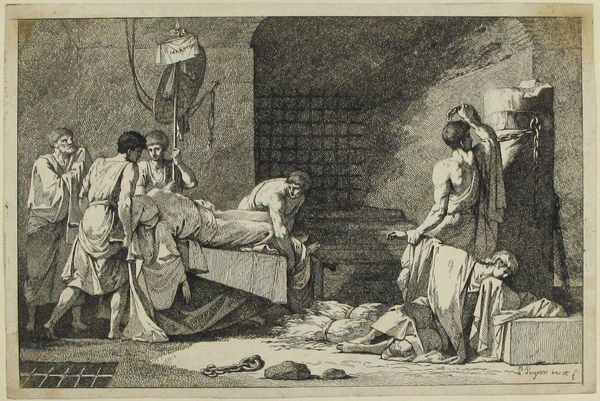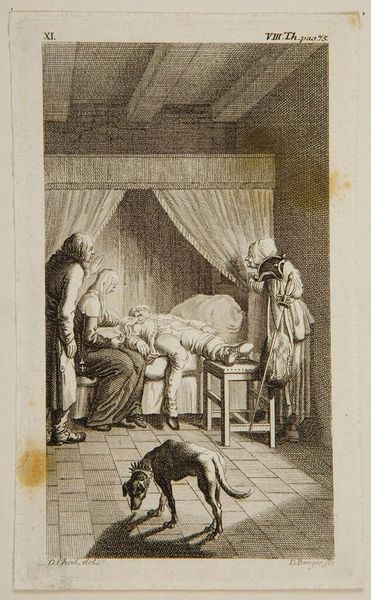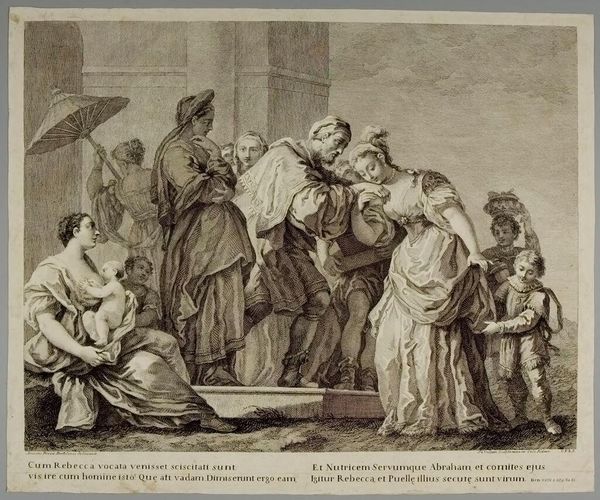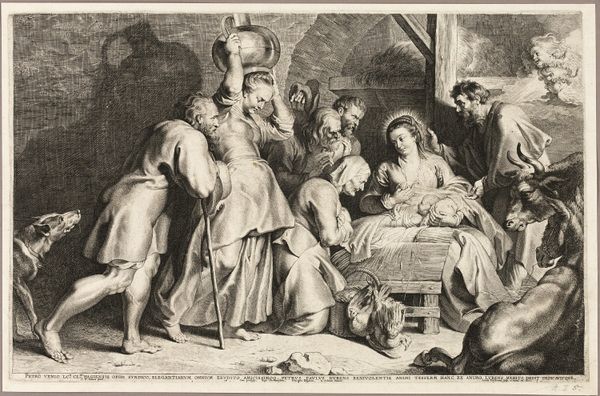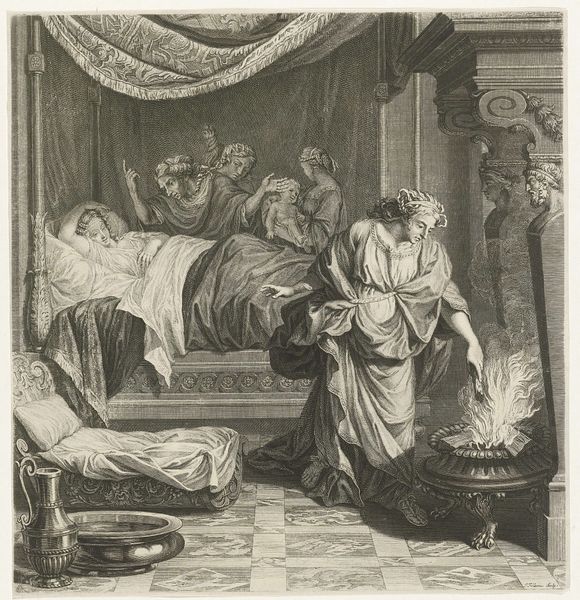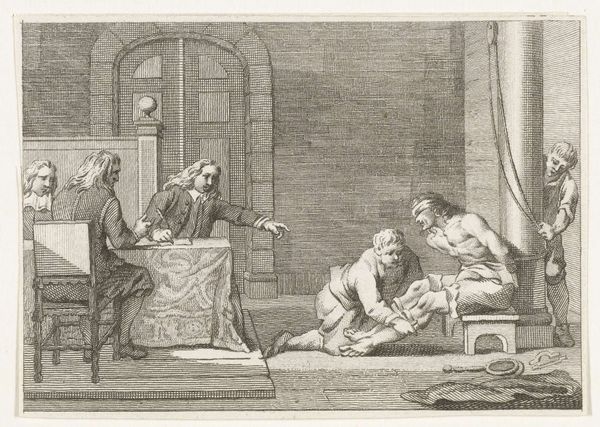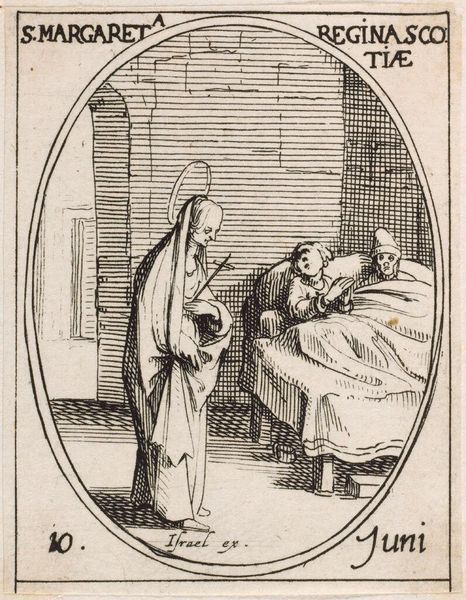
Copyright: CC0 1.0
Curator: The composition in Francesco Bartolozzi's "Testament of Eudamida di Corinto" is quite striking, isn't it? The linear quality of the engraving and the sepia tones evoke a feeling of antiquity. Editor: Indeed, one immediately notes the means of its production: the precise, repeatable nature of engraving allowed for wider access to this Neoclassical style, and it’s interesting that Bartolozzi produced this in London. Curator: The scene is carefully arranged, with the dying woman's form a focal point and the witnesses around her, each reacting in their own way. I am struck by how the light and shadow define their emotional states. Editor: Considering it was made in London after Poussin’s painting, we must think about the British art market’s taste for the Grand Tour and the desire to reproduce and consume these images widely. Curator: Absolutely, and the engraving technique, while allowing for reproduction, also lends a certain formality, a kind of emotional restraint. What do you make of the figures’ classical drapery and idealized forms? Editor: It speaks to the market for such imagery and the labor required to produce it, placing Bartolozzi within a system of workshops and distribution networks, rather than focusing on individual genius. Curator: A fascinating point. It leaves one to ponder about the social context in which this scene of private grief was crafted and consumed. Editor: Yes, seeing this image as an object circulated within networks of production and consumption really shifts how we understand its artistic merit.
Comments
No comments
Be the first to comment and join the conversation on the ultimate creative platform.
